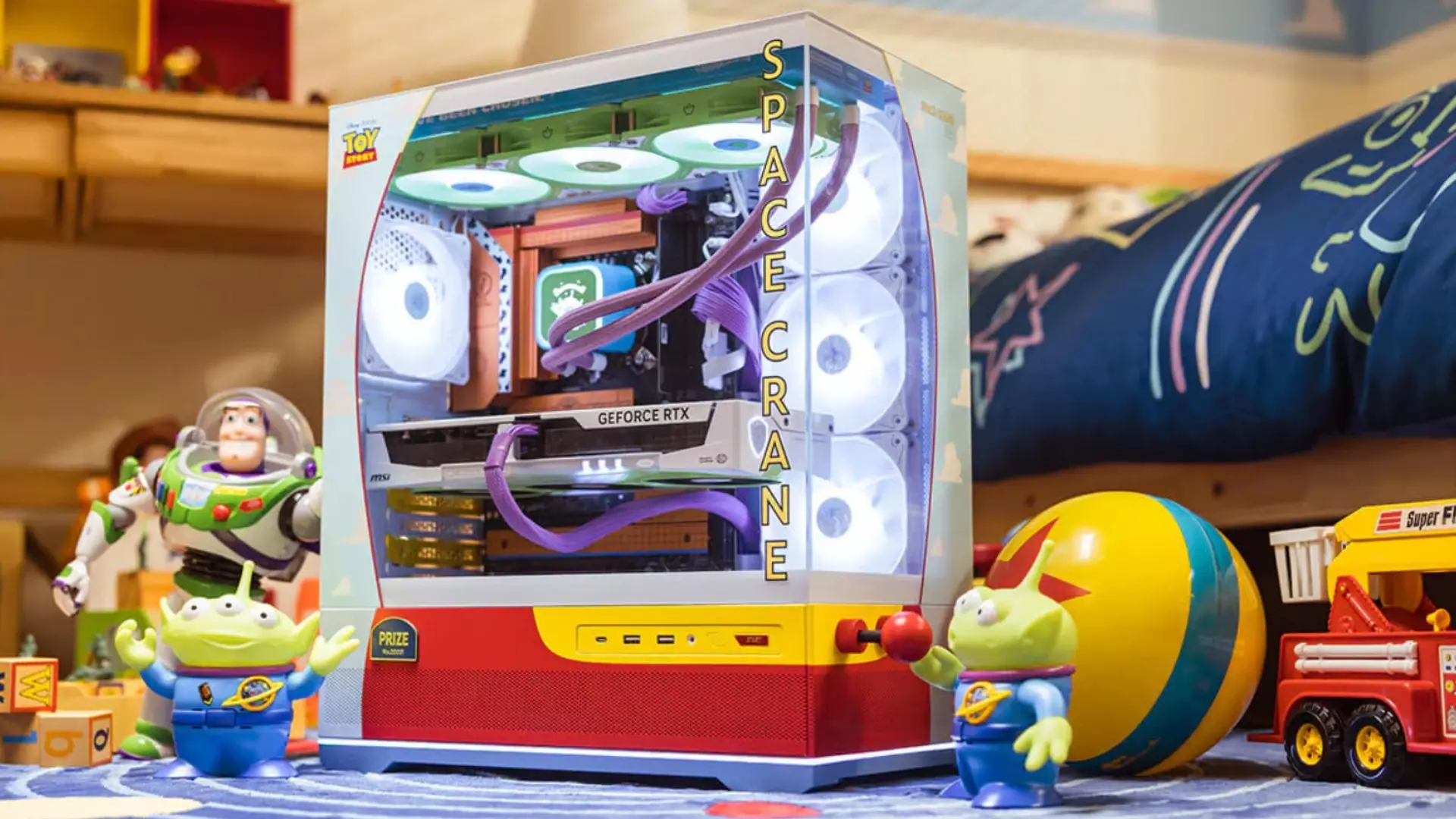The latest reveal from MSI—a vibrant gaming PC inspired by Pixar’s iconic “Toy Story” franchise—has stirred up excitement among fans and tech enthusiasts alike. This limited-edition release, timed to coincide with the 30th anniversary of the beloved film, showcases not only the innovation of gaming hardware but also the enduring impact of animated storytelling on our culture. Priced at NT$79,900 (approximately $2,653), this unique rig epitomizes creativity but raises some eyebrows regarding value and performance. As Disney adults and gamers unite over this colorful concoction, one must examine whether this capture of nostalgia and whimsy translates into a must-have gaming experience.
Design Meets Nostalgia: An Aesthetic Adventure
One glance at the Toy Story-themed PC and it’s clear that MSI has gone above and beyond in capturing the playful spirit of the franchise. A crane machine-style case, adorned in vibrant red, yellow, and blue hues, invites onlookers to bask in its striking visual appeal. The inclusion of whimsical features—like a joystick styled like a claw machine and magnetic decorations that resemble prize boxes—adds to its charm, creating a tableau that tantalizes both nostalgia and visual curiosity.
However, while the aesthetics are undoubtedly captivating, one has to ask: at what cost? The design feels both wonderfully imaginative and, at times, overwhelming. The brightness and chaos of colors might not appeal to everyone, potentially alienating gamers who prefer more understated designs. MSI takes a bold stand with this piece, but does it risk overshadowing the gaming prowess that should arguably be at the forefront?
Impressive Specs or Just a Pretty Face?
When it comes to technical specifications, the Toy Story rig offers a mixed bag. Under the hood, it features a GeForce RTX 5070 and an Intel Core Ultra 5 245K, alongside an MSI Z890 Gaming Plus motherboard and a 1 TB MSI Spatium M.2 SSD. However, a critical lens on these components reveals a less than stellar gaming performance value at this price point. The fact that the Intel Core Ultra 5 is designed as a budget chip raises immediate concerns for gamers looking for a dedicated gaming experience. For such a premium price, consumers generally expect more robust options, particularly for a flagship rig tied to a beloved franchise.
By comparison, alternatives in the market offer superior specifications for less money, with high-performance options such as an RTX 5070 rig with a Ryzen 7 9800X3D available for $2,100. This disparity in value forces us to confront an uncomfortable reality: do the whimsical aesthetics outweigh the necessity for technical efficiency?
The Market’s Take on Exclusivity
MSI’s Toy Story rig isn’t just about hardware—it’s about a cultural statement, a limited edition that merges the gaming and film worlds. However, exclusivity doesn’t always equate to desirability or practicality. The aesthetic choices resonate with a niche audience—the Disney aficionados and die-hard fans of the Toy Story series—but there is a fine line between novelty and practicality. One must wonder how many gamers and collectors will be willing to embrace the substantial price tag just to own a piece of nostalgia over performance.
Moreover, while the gaming community thrives on pushing boundaries with cutting-edge technology, a rig that prioritizes thematic relevance over functionality may leave a sour taste. The design’s chaotic charm might attract a few buyers, but it could also repel gamers who desire sleek performance-driven setups.
Final Thoughts: A Love Letter or a Missed Mark?
MSI’s Toy Story gaming PC boldly invites fans into a technicolor world reminiscent of childhood. Its vibrant design encapsulates the whimsy and charm of Pixar’s beloved characters, creating an unforgettable visual narrative. Yet, despite the creative ambition, it raises valid questions about the balance between form and function. For true gamers, the allure of a themed rig may not be enough to overshadow the shortcomings in performance. Ultimately, one must reflect: is this homage a delightful diversion or merely a colorful distraction from what gaming truly stands for?


Leave a Reply